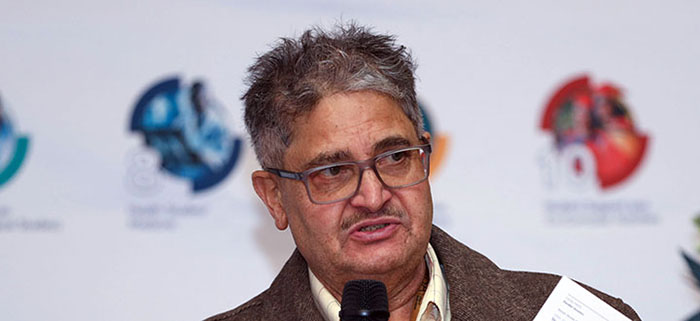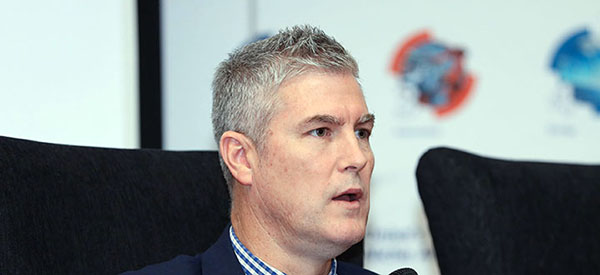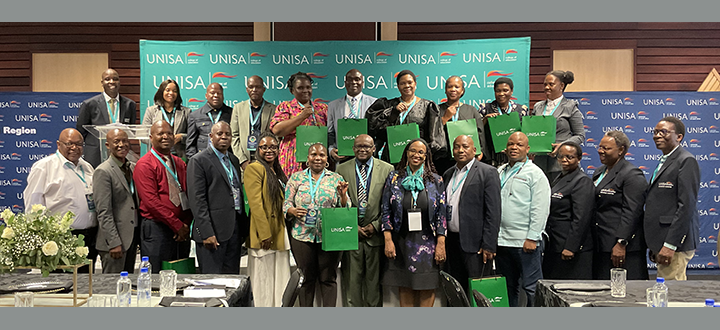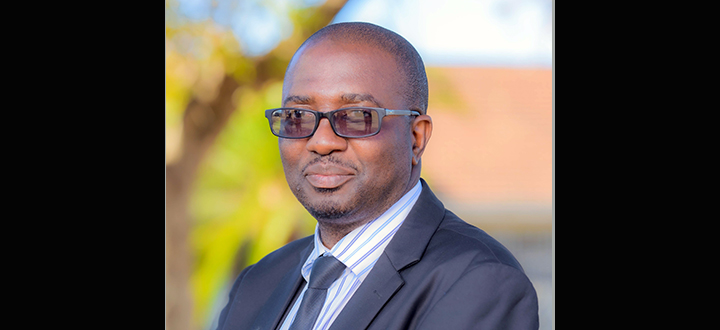College of College of Graduate Studies
Stormy weather: The automotive industry in flux

Dr Christopher Thomas, Senior Lecturer in the School of Social Sciences at the College of Human Sciences
On 30 July 2025, specialists from Unisa and the automotive industry met at the university’s Catalytic Niche Area (CNA) Research Symposium to discuss CNA 3: Automotive Studies. Key topics included tariffs, global shifts and geopolitical factors affecting the industry, under the theme of Automotive new-energy vehicles and the changing global automotive economy.
Setting the context for the session, Dr Christopher Thomas, Senior Lecturer in the School of Social Sciences at the College of Human Sciences, stated that the automotive industry is one of the biggest exporters in South Africa. "However," he cautioned, "it faces environmental and self-sustainability challenges, and the curtailing of staff amidst the high unemployment rate in the country. We have had certain motor companies that wanted to close their operations in the country, citing the uncertainty of the markets. This brought the possibility of massive layoffs."
Continuing, Thomas expressed confidence in the panellists participating in the discussion, stating: "Our insiders in the panel can give us a better insight into what these challenges look like, the needs of the industry, and, additionally, what areas need research at master’s and PhD level, bearing in mind that we have Unisa students studying in disciplines aligned with this industry. These range from engineering and chemistry to industrial psychology, among others."
Shivani Singh, Chief Projects Officer at the National Association of Automobile Manufacturers of South Africa (NAAMSA), explained that the objective of the organisation is to represent the interests of original equipment manufacturers (OEMs), which include manufacturing OEMs that build their vehicles in South Africa, such as Volkswagen, Isuzu and Toyota, and retailing OEMs that import vehicles, such as Porsche, Suzuki and Mitsubishi. NAAMSA also represents the interests of the medium and heavy commercial vehicle (MHCV) sector.

Shivani Singh, Chief Projects Officer at the National Association of Automobile Manufacturers of South Africa (NAAMSA)
The South African Automotive Master Plan 2025
Continuing, Singh stated: "The South African Automotive Master Plan 2025 aims to, among others, double employment in the industry to more than 244 000 jobs, increase local content in South African assembled vehicles to 60%, produce 1% of global production, projected to be about 1.4 units million in 2035, and improve manufacturing competitiveness levels to match those of leading competitors".
However, Singh cast doubt on the feasibility of some of the targets, stating: "Local content declined by 2% last year, and is sitting at around 38%. One of the reasons for this is that the industry is a highly integrated global value chain; therefore, not all decisions are made in South Africa. This includes pricing decisions."
Value chain volatility
Continuing on the topic, Singh said that the value chain remains volatile. She explained: "Even if something incredible happens in the domestic market, BMW, for example, cannot change the number of vehicles they decide to manufacture – it is an allocated volume. The other challenge we have is that, besides being globally oriented, South Africa is an export-oriented centre. An example in this regard is that about two-thirds of a BMW vehicle manufactured at the Rosslyn plant needs to be grade-equivalent to one manufactured at the United States’ South Carolina plant. In other words, they must be of the same quality."
Furthermore, Singh pointed out a disparity in how South Africa’s automotive industry operates compared to other countries. "Thailand and Malaysia subsidise electricity and public transport for automotive staff," she explained. "In some instances, these workers do not pay personal income tax. In essence, they have many benefits which we unfortunately cannot match at the moment."
Targeting the entry level
Concluding, Singh observed that Chinese-manufactured vehicles are becoming dominant in the local market. Still, the figures show that six of the best-selling models in the market were actually locally produced vehicles. "This," she said, "is important, because for the South African automotive industry to be successful, there needs to be a local market absorption of the vehicles that we make. Secondly, it is not a Chinese 'infiltration', but an affordability problem. The country's chief economist pointed out that at the end of quarter one of 2025, 74% of new vehicles sold were priced at under R500 000. Therefore, the question we need to ask ourselves right now is how South Africa can pivot itself to be a market of entry-level and affordable vehicles."
Vulnerability to global shifts and geopolitics
Kobus Sauer, Senior Specialist in Automotive and Transport Equipment at the Industrial Development Corporation (IDC), agreed with Singh that the global automotive industry is vulnerable to volatility. "However," he said, "there is hope. This industry is very robust. As a country, we are very good at manufacturing and have a good supply base, and earn international awards for the quality of the cars we produce."

Kobus Sauer, Senior Specialist in Automotive and Transport Equipment at the Industrial Development Corporation (IDC)
Continuing, Sauer emphasised that the challenges in the industry are not new and that the automotive industry is well adapted to handle these challenges. One of the many examples he cited was the 100th anniversary celebration of South Africa’s BMW manufacturing plant, being among the first to be based in Africa outside European soil and still going strong despite the setbacks created by global market volatilities.
In conclusion, Sauer advised: "From a funding point of view, if one desires to build an automotive industry, your business plan must be economically viable because the industry is very much dictated by production volume scale. Additionally, we do not have control over the OEMs – government can incentivise, but the environment must be economically sensible."
Unisa’s Distinguished Professor in Automotive Studies, Igor Gorlach, and Emeritus Professor from the University of Cape Town’s School of Economics, Anthony Black, who participated virtually, continued to deliberate on the future of the local and international automotive industry, the economy, global tariff influences, and the future of new-energy vehicles.
* By Godfrey Madibane, Acting Journalist, Department of Institutional Advancement
** Photography by Mduduzi Khathamzi, Multimedia Centre
Publish date: 2025-08-06 00:00:00.0


 Empowering educators for a transformative future
Empowering educators for a transformative future
 Unisa's Masedi Masekane makes academic history
Unisa's Masedi Masekane makes academic history
 A research management star in the making
A research management star in the making
 Unisa alumna leading Africa's archives revolution
Unisa alumna leading Africa's archives revolution
 From Kwekwe to Unisa: An inspiring PhD journey
From Kwekwe to Unisa: An inspiring PhD journey